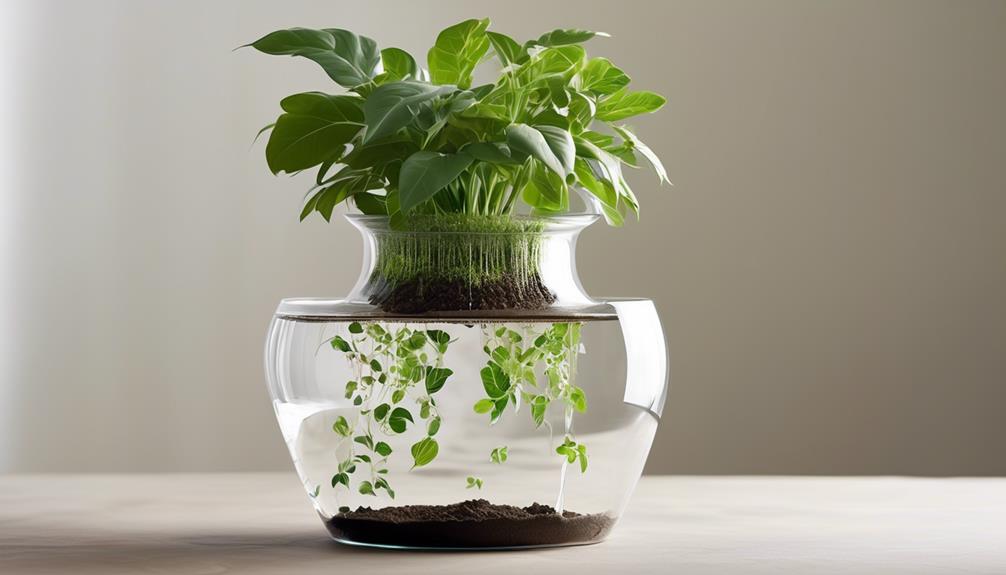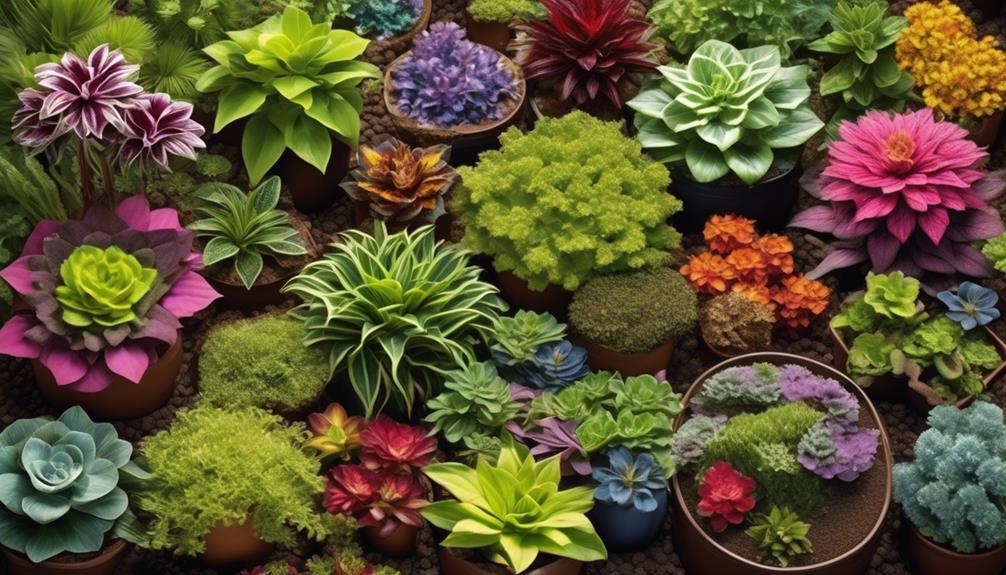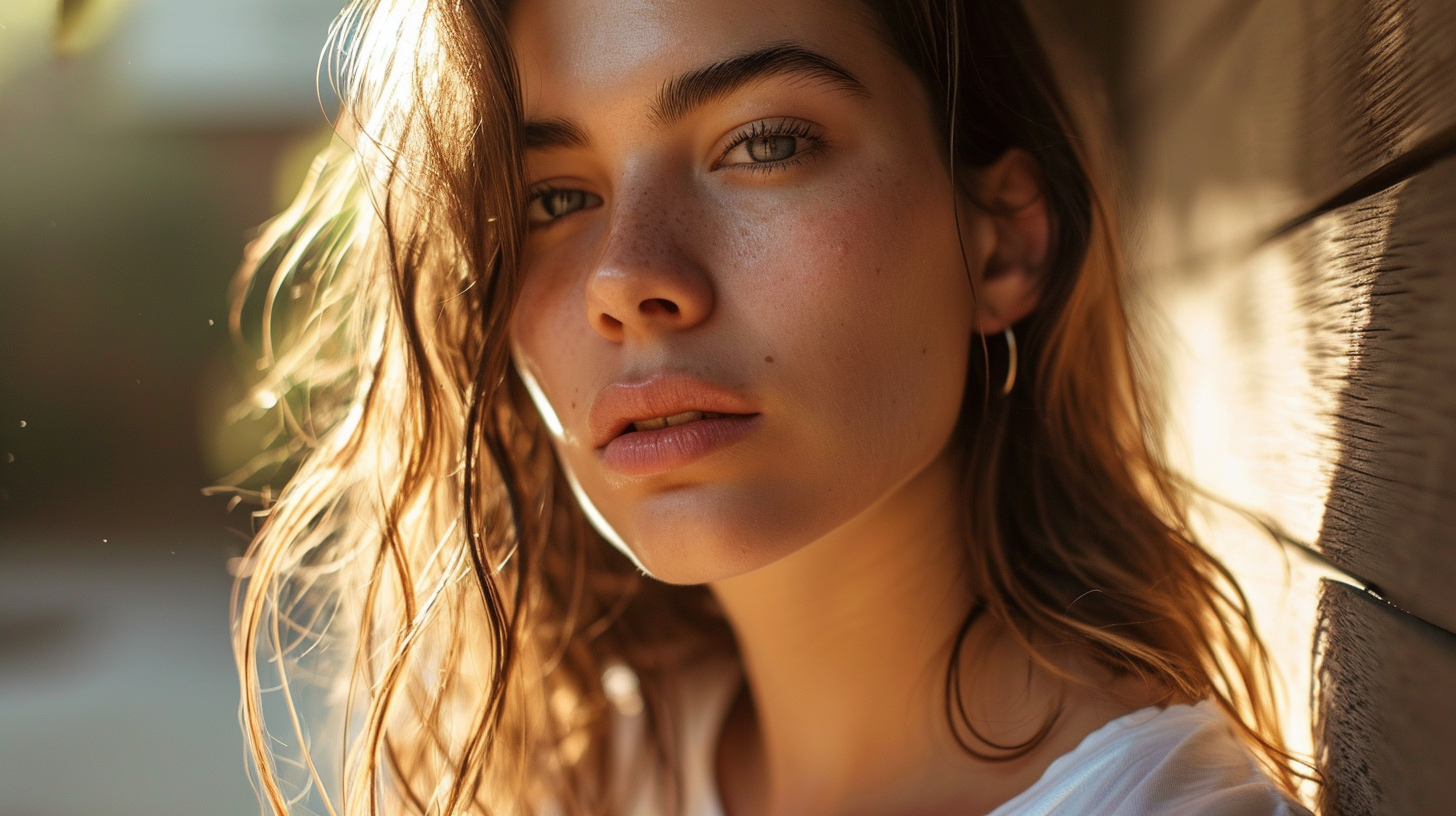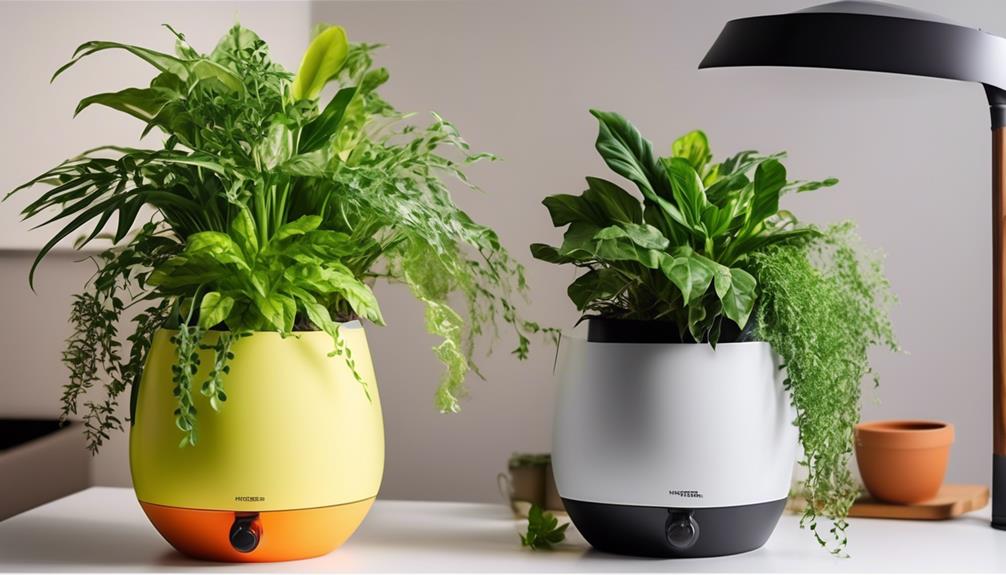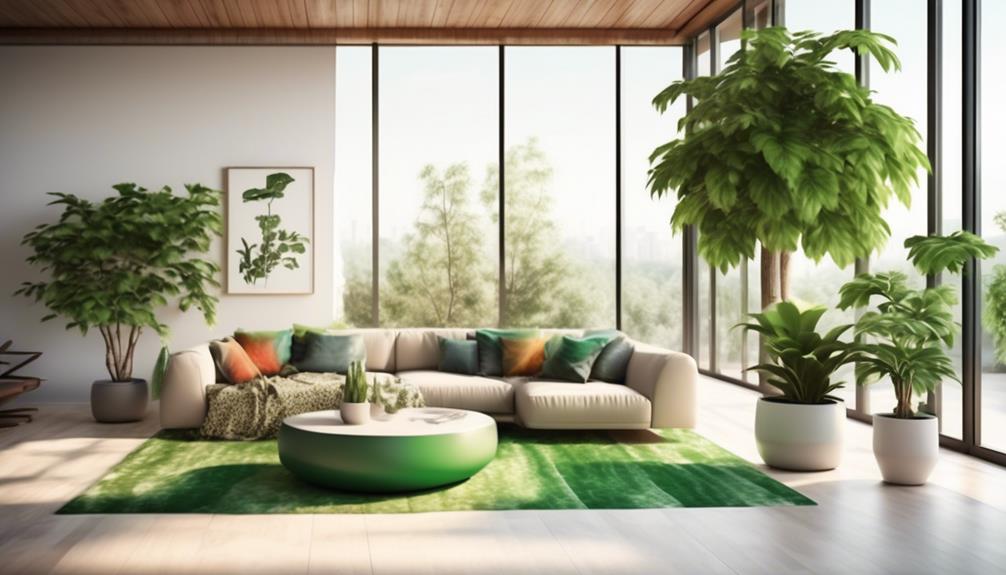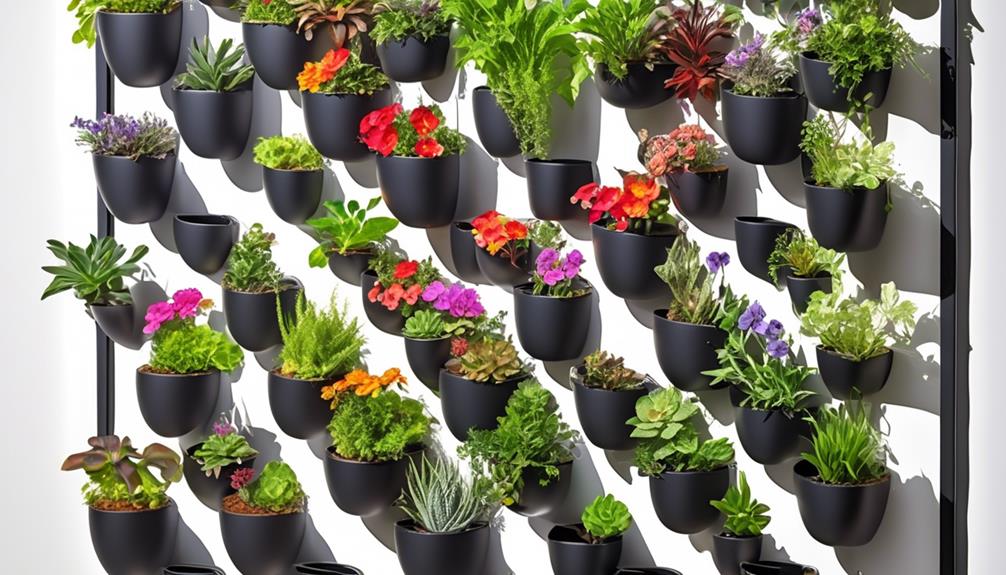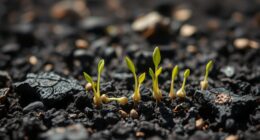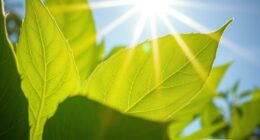Do you ever feel like your plants need just as much care and attention as a demanding toddler? The answer may lie in using self-watering pots.
They're like having a reliable babysitter for your plants, ensuring they get the hydration they need without requiring constant supervision.
But what exactly does 'self-watering pot' mean, and how does it work? Let's explore this ingenious invention and its benefits in maintaining healthy, thriving plants.
Key Takeaways
- Self-watering pots maintain optimal soil moisture levels.
- Self-watering pots promote healthy root development.
- Self-watering pots minimize the need for frequent watering.
- Self-watering pots deliver water directly to the plant's roots.
Definition of Self-Watering Pot
Self-watering pots, also known as self-watering planters, are containers designed to provide a consistent supply of water to plants through a reservoir system. These innovative pots offer numerous benefits to gardening enthusiasts.
One key advantage is their ability to maintain optimal soil moisture levels, reducing the risk of both overwatering and underwatering. This feature is especially beneficial for busy individuals or those new to gardening, as it minimizes the need for frequent watering and helps prevent plant stress and wilting. Additionally, self-watering pots promote healthy root development by allowing plants to draw water as needed, resulting in stronger and more resilient root systems.
However, it's important to note some drawbacks associated with self-watering pots. While they can be a convenient solution for maintaining consistent moisture levels, they also require periodic monitoring to ensure the reservoir is adequately filled. Over time, mineral buildup in the reservoir or soil can also occur, potentially affecting plant health. Additionally, some plants may not thrive in self-watering pots, as certain species have specific watering requirements that may not align with the system's capabilities.
It's essential for gardeners to carefully consider their plant selections and regularly maintain self-watering pots to maximize their benefits.
How Self-Watering Pots Work

After understanding the benefits and drawbacks of self-watering pots, it becomes essential to comprehend the mechanism by which these innovative containers provide consistent moisture to plants. Self-watering pots operate on advanced watering technology and plant hydration strategies to maintain an optimal moisture level for plant growth. Here's how they work:
- Reservoir: A self-watering pot contains a reservoir at the bottom, which stores water for the plant. This reservoir is separated from the soil by a platform, preventing the roots from becoming waterlogged.
- Wick or Capillary Action: A wick or capillary system extends from the reservoir into the soil. Through capillary action, the soil draws water from the reservoir as needed, ensuring a steady supply of moisture to the plant roots.
- Water Level Indicator: Many self-watering pots are equipped with a water level indicator, allowing users to monitor the water level in the reservoir and refill it when necessary.
- Aeration: These pots also incorporate aeration mechanisms to prevent water stagnation and promote healthy root growth.
Advantages of Self-Watering Pots
Self-watering pots offer several advantages for plant care.
They enable efficient water usage by providing a reservoir that allows plants to take up water as needed.
This reduces the frequency of watering and promotes healthier plant growth overall.
Efficient Water Usage
With self-watering pots, the efficient usage of water is achieved through a built-in reservoir that allows plants to take up water as needed, reducing the risk of over or under watering. This method promotes efficient watering techniques by minimizing water wastage and ensuring that plants receive an adequate, steady supply. The self-watering pot cost is justified by the long-term savings on water bills.
The benefits of efficient water usage in self-watering pots include:
- Optimal Moisture Levels: The reservoir maintains consistent moisture levels, preventing water stress or root rot.
- Reduced Evaporation: The enclosed reservoir minimizes water evaporation, maximizing water utilization.
- Precise Water Delivery: Water is delivered directly to the plant's roots, minimizing runoff and ensuring efficient absorption.
- Water Conservation: Self-watering pots reduce water usage by delivering water only when needed, promoting conservation.
Self-watering pots provide a scientific and technical solution for mastering efficient water usage in plant care.
Reduced Watering Frequency
Efficient water usage in self-watering pots sets the stage for discussing the advantages of reduced watering frequency, which is a key feature of this innovative irrigation system.
By maintaining a consistent level of moisture in the soil, self-watering pots promote plant hydration without the need for frequent manual watering. This not only ensures optimal growth conditions but also minimizes water wastage, contributing to water conservation efforts.
The sub-irrigation system in self-watering pots allows plants to draw water as needed, reducing the frequency of watering compared to traditional pots. As a result, the risk of overwatering or underwatering is significantly mitigated, leading to healthier and more resilient plants.
The reduced watering frequency in self-watering pots aligns with sustainable water management practices, making them an eco-friendly choice for plant cultivation.
Plant Health Benefits
Promoting optimal plant health through consistent moisture delivery, self-watering pots offer a range of advantages that support robust and vibrant plant growth.
The benefits of self-watering pots include:
- Even Moisture Levels: Maintaining consistent soil moisture levels is crucial for plant health. Self-watering pots ensure that plants receive a steady supply of water, preventing under or overwatering.
- Reduced Stress: By providing a continuous water supply, self-watering pots reduce the stress on plants, allowing them to focus their energy on growth and development.
- Improved Nutrient Uptake: Consistent soil moisture levels enhance the uptake of essential nutrients, promoting healthy plant growth and vitality.
- Root Health: Proper soil moisture supports the development of strong and healthy roots, which are essential for overall plant vigor and resilience.
Self-watering pots play a pivotal role in creating an optimal environment for plant growth, ensuring that soil moisture remains at an ideal level for sustained health and vitality.
Types of Self-Watering Systems
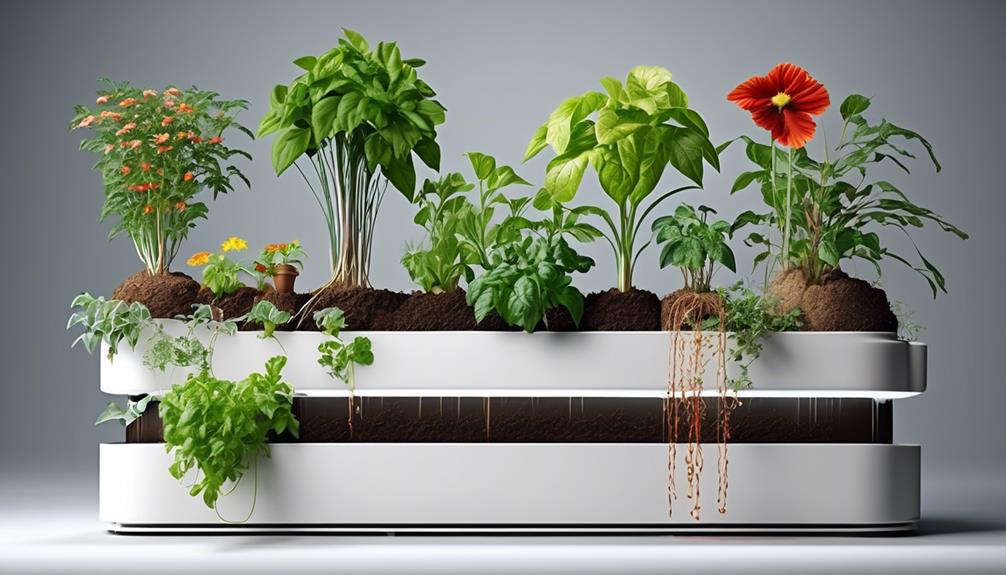
We will now explore the various types of self-watering systems available for pots.
These systems include reservoir water supply, capillary action mechanism, and soil moisture control.
Each of these systems plays a crucial role in ensuring efficient and effective water delivery to the plants, promoting healthy growth and reducing the need for frequent watering.
Reservoir Water Supply
The self-watering pots utilize various reservoir water supply systems to provide an efficient and consistent watering method for plants.
These systems include:
- Wicking System: This system uses a wick to draw water from the reservoir to the soil. It's suitable for plants with lower water needs.
- Passive System: Operating on the principle of capillary action, this system allows the plant to draw water as needed, making it suitable for a wide range of plant types.
- Active System: Utilizing a pump or a valve, this system actively regulates water flow into the soil, making it ideal for plants with specific watering requirements.
- Aerated System: This system ensures proper oxygenation of the water in the reservoir, promoting healthy root growth and making it suitable for a variety of plants, including those sensitive to waterlogging.
Each of these reservoir water supply systems caters to different plant compatibility and reservoir capacity, providing an effective self-watering solution for various plant needs.
Capillary Action Mechanism
Utilizing the capillary action mechanism, self-watering systems harness the natural properties of water to provide a consistent and efficient watering method for a variety of plant types.
Capillary action, also known as wicking, is the process by which water is drawn upward through a porous medium, such as soil or a growing medium, due to the forces of adhesion and cohesion.
In self-watering pots, this mechanism is employed through the use of a wick or a capillary mat that extends from the reservoir of water to the root zone of the plant.
As the growing medium absorbs water from the reservoir through capillary action, it ensures that the plant's roots have access to moisture as needed, promoting healthy growth.
This method of water absorption also minimizes the risk of overwatering or underwatering, making it a reliable choice for maintaining optimal soil moisture levels.
Soil Moisture Control
To effectively control soil moisture, self-watering systems employ various designs that utilize capillary action to deliver water to plant roots. These systems are designed to provide an optimal environment for plant growth by carefully managing soil moisture.
Types of self-watering systems include:
- Reservoir Systems: These systems have a water reservoir at the bottom of the pot, which is connected to the soil through a wicking mechanism, allowing the soil to draw up water as needed.
- Wick Systems: In this system, a wick, such as a rope or fabric, extends from the water reservoir into the soil, allowing water to move upward through capillary action.
- Passive Systems: These systems use the natural process of osmosis to deliver water to the soil as needed.
- Bottom Watering Trays: These trays allow plants to absorb water from the bottom, promoting healthy root growth while preventing waterlogging.
Components of a Self-Watering Pot
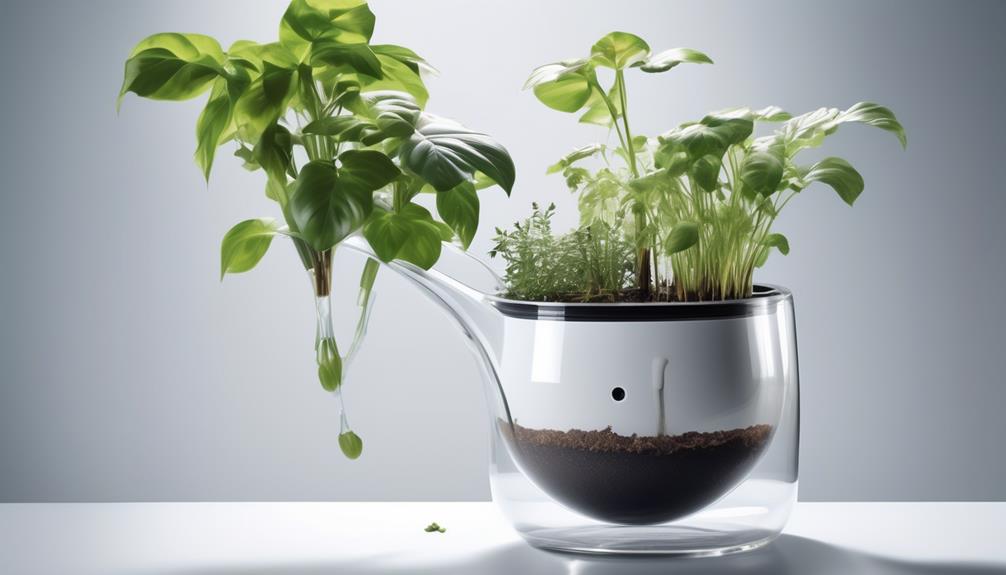
Occasionally, the capillary wick is used to draw water from the reservoir to the soil in self-watering pots, ensuring consistent moisture levels for the plant. The components of a self-watering pot work together to create a self-sustaining system that benefits plant growth. These components include a water reservoir, a water level indicator, and a capillary wick.
| Component | Description | Function |
|---|---|---|
| Water Reservoir | Holds the water supply for the plant. | Provides a constant source of water for the plant's roots. |
| Water Level Indicator | Monitors the water level in the reservoir. | Alerts the user when the water level is low and requires refilling. |
| Capillary Wick | Transports water from the reservoir to the soil through capillary action. | Ensures the soil maintains consistent moisture levels, promoting healthy plant growth. |
These components work synergistically, allowing for extended periods between watering, making self-watering pots an excellent choice for busy individuals or those looking to optimize plant care. The capillary wick facilitates water movement, making self-watering pots suitable for a wide range of plant choices, from herbs to flowers and even small vegetables.
Best Plants for Self-Watering Pots
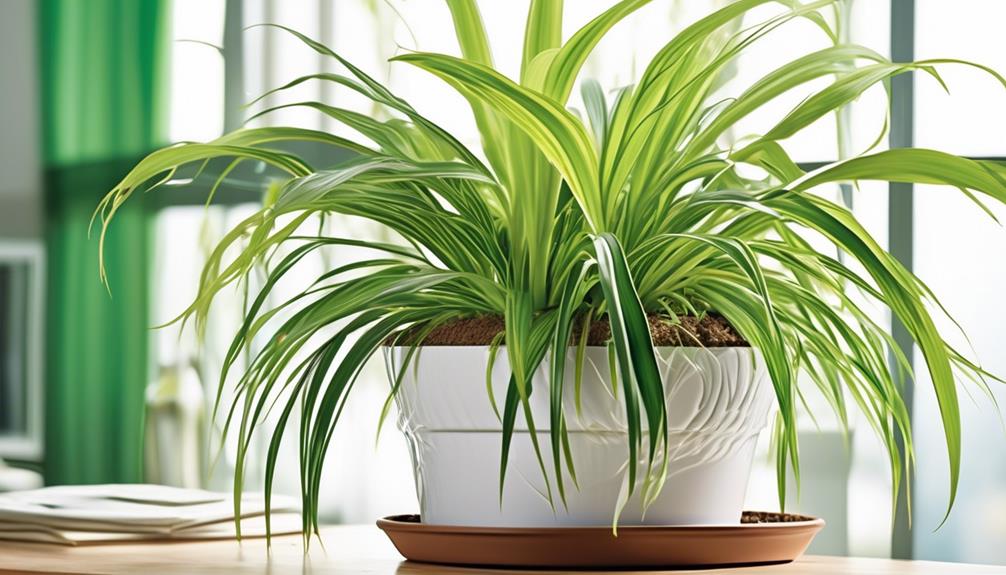
When selecting plants for self-watering pots, it's essential to choose species that are well-suited for this type of container. We'll share insights on the ideal plant choices, providing tips on the frequency of watering and how to effectively maintain and care for these plants.
Ideal Plant Choices
Selecting the appropriate plant varieties for self-watering pots is essential for ensuring optimal growth and maintenance. When choosing plants for self-watering pots, it's crucial to consider their water requirements, root systems, and growth habits.
The following plant choices are well-suited for self-watering pots:
- Herbs: Compact and shallow-rooted herbs like basil, parsley, and thyme thrive in self-watering pots, making them ideal choices for culinary enthusiasts.
- Succulents: Drought-tolerant succulents such as aloe vera, echeveria, and sedum are excellent options for self-watering pots due to their minimal watering needs.
- Ferns: Moisture-loving ferns like maidenhair and Boston ferns flourish in self-watering pots, providing a lush and vibrant display.
- Peace Lily: With its low maintenance requirements and elegant blooms, the peace lily is well-suited for self-watering pots, adding a touch of beauty to indoor spaces.
Careful consideration of plant placement and soil composition further enhances the success of these plant choices in self-watering pots.
Watering Frequency Tips
Considering the water requirements and growth habits of plants is crucial when determining the watering frequency for self-watering pots. Each plant species has specific needs, so it's essential to establish a watering schedule tailored to the individual requirements of the plants in the self-watering pots. Factors such as the plant's size, age, and environmental conditions should be taken into account when establishing the watering frequency.
Monitoring the moisture levels in the potting mix is also vital to prevent over watering. Self-watering pots can lead to over watering if not managed properly, so it's important to adjust the watering schedule accordingly.
Maintenance and Care
To determine the best plants for self-watering pots, we must carefully consider the watering frequency tailored to the individual requirements of the plants, taking into account factors such as size, age, and environmental conditions. When selecting plants for self-watering pots, it's essential to choose those that thrive in consistently moist soil and can tolerate periods of wetness without developing root rot.
Some of the best plants for self-watering pots include:
- Peace lilies
- Spider plants
- Pothos
- African violets
These plants are well-suited for self-watering pots due to their moderate watering schedule and preference for a well-draining potting mix. When maintaining and caring for plants in self-watering pots, monitoring the potting mix moisture level is crucial to ensure the plants receive the appropriate amount of water without becoming waterlogged.
Choosing the Right Self-Watering Pot
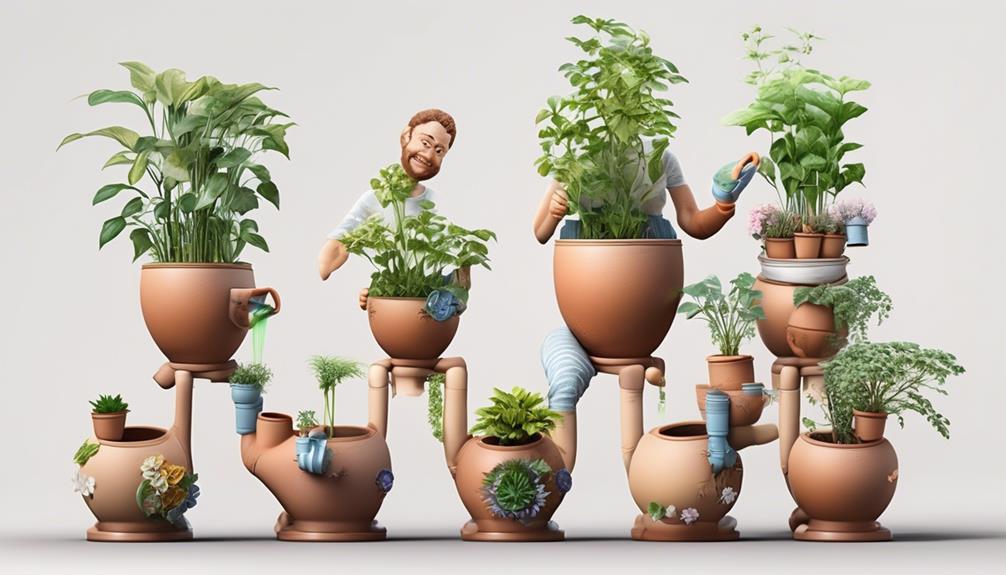
When choosing the right self-watering pot, it's essential to consider the size of the plant and the amount of water it requires. Plant selection plays a critical role in determining the appropriate self-watering pot. Different plants have varying water needs, and it's important to match these requirements with the self-watering pot's capabilities.
For example, a larger plant with high water requirements will need a self-watering pot with a larger water reservoir to ensure it receives an adequate water supply. On the other hand, smaller plants with lower water needs may thrive in pots with smaller reservoirs.
Understanding the watering techniques specific to the chosen plant is crucial when selecting a self-watering pot. Some plants prefer consistently moist soil, while others thrive in drier conditions. The self-watering pot should facilitate the specific watering technique required for the plant to flourish.
Setting Up a Self-Watering Pot

Setting up a self-watering pot involves ensuring the wick or water reservoir is properly positioned to provide consistent and adequate moisture to the plant's root system. To successfully set up a self-watering pot, follow these steps:
- Selecting the Right Plant: Choose a plant that's suitable for self-watering pots, such as herbs, small vegetables, or houseplants. Consider the plant's water requirements and ensure it's compatible with the self-watering system.
- Positioning the Wick or Reservoir: Place the wick or water reservoir in a way that allows it to reach the soil and provide water to the plant's roots. The wick should be in direct contact with the soil to facilitate capillary action.
- Monitoring the Watering Schedule: Adjust the watering schedule based on the plant's needs and the self-watering pot's capabilities. Regularly check the moisture levels in the soil to ensure the plant receives the right amount of water.
- Testing the System: Before fully relying on the self-watering pot, conduct a trial period to observe how the system functions with your specific plant and environmental conditions.
When setting up a self-watering pot, attention to detail and understanding the plant's requirements are essential for maintaining a healthy and thriving container garden.
Watering Frequency for Self-Watering Pots
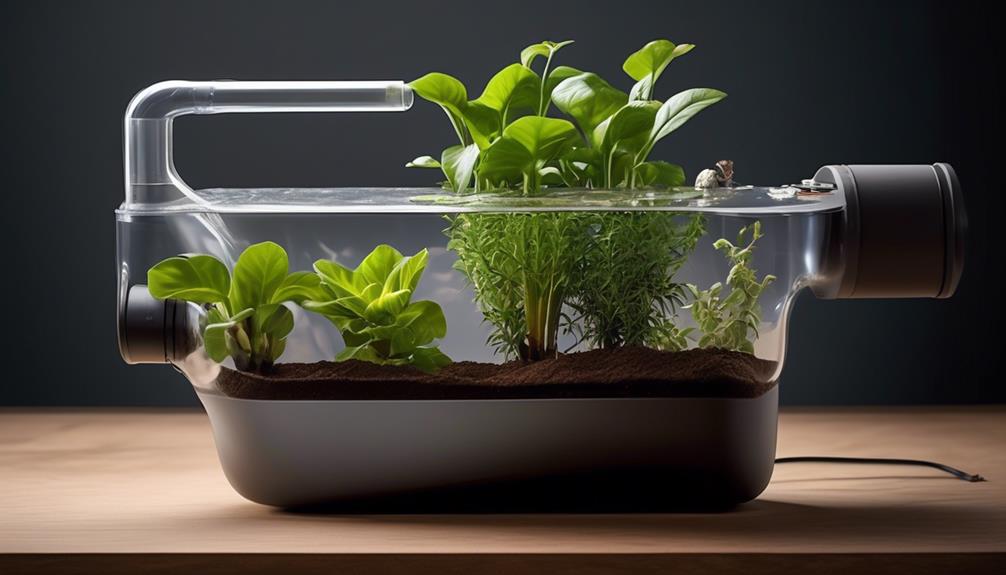
The optimal watering frequency for self-watering pots depends on factors such as the plant's species, size, and environmental conditions. When determining a watering schedule for self-watering pots, it's essential to consider the moisture levels required for specific plant species. Different plants have varying water needs, and understanding these requirements is crucial for effective plant care. Additionally, the size of the plant and the pot, as well as the ambient conditions, play a significant role in establishing an appropriate watering regimen.
A well-maintained self-watering pot should promote healthy plant growth by providing consistent moisture levels. Monitoring the moisture content in the potting medium can help in determining the frequency of watering. It's important to strike a balance, ensuring that the potting medium remains consistently moist without becoming waterlogged, which can lead to root rot and other issues.
Maintenance of Self-Watering Pots

Maintenance of self-watering pots is essential to ensure that the potting medium consistently provides the appropriate moisture levels for healthy plant growth, as discussed in the previous subtopic.
Here are some maintenance tips to keep your self-watering pots in optimal condition:
- Regularly clean the water reservoir to prevent algae and mold growth, which can clog the system and affect water distribution.
- Check the wicking system for any blockages or damages that may impede proper water uptake by the potting medium.
- Inspect the potting medium for salt buildup, which can occur from the evaporation of water, and flush the system if necessary to prevent salt accumulation.
- Monitor the water level indicator to ensure it's functioning accurately and adjust as needed to maintain the optimal water level for your plants.
Common issues that may arise with self-watering pots include clogging of the wick, overwatering due to a malfunctioning water level indicator, and salt buildup in the potting medium. By following these maintenance tips and addressing common issues promptly, you can ensure that your self-watering pots effectively provide the consistent moisture levels required for healthy plant growth.
DIY Self-Watering Pot Options
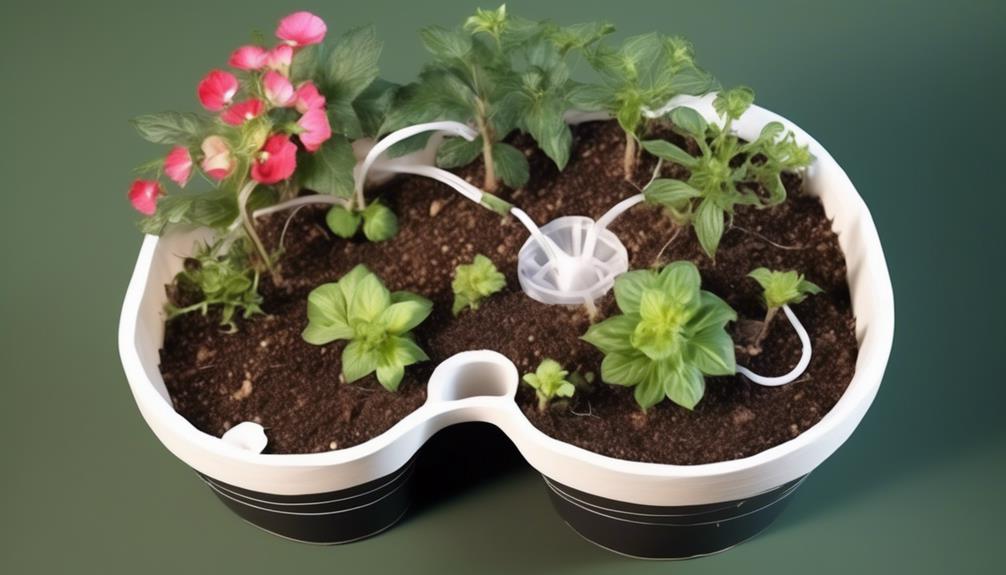
Today, let's talk about the benefits of creating your own self-watering pots and the materials needed to do so.
We'll explore the advantages of opting for a do-it-yourself approach and the various materials that can be used to construct these innovative planters.
Our focus will be on the practical aspects of creating DIY self-watering pots and the different options available for those looking to take on this project.
Benefits of DIY
When considering DIY self-watering pot options, it's important to weigh the benefits of creating a system tailored to your specific plant and environmental needs.
The benefits of DIY self-watering systems include:
- Customization: Tailoring the self-watering system to the specific water requirements of your chosen plants.
- Cost-efficiency: Creating a DIY self-watering pot can be more economical than purchasing pre-made options.
- Sustainability: Utilizing recycled materials and creating a self-sustaining watering system aligns with eco-friendly practices.
- Learning experience: Building a DIY self-watering pot provides an opportunity to understand the mechanics of plant hydration and develop new skills in horticulture.
Materials Needed
What materials are essential for creating a DIY self-watering pot to ensure efficient plant hydration and growth? Constructing a self-watering pot requires specific materials to facilitate the wicking and watering process. Here are the essential materials needed for creating a DIY self-watering pot:
| Materials | Description | Purpose |
|---|---|---|
| Plastic Container | Deep and sturdy container without drainage holes | Holds the plant and water reservoir |
| Water Reservoir | Plastic bottle or PVC pipe | Stores water for self-watering system |
| Wicking Material | Cotton rope or felt fabric | Draws water from reservoir to soil |
| Growing Medium | Potting mix | Provides nutrients and support for plant roots |
| Plant | Desired plant species | Grows within the self-watering system |
These materials, when used in the construction process, enable the efficient self-watering mechanism for plant growth.
Self-Watering Pots Vs. Traditional Pots
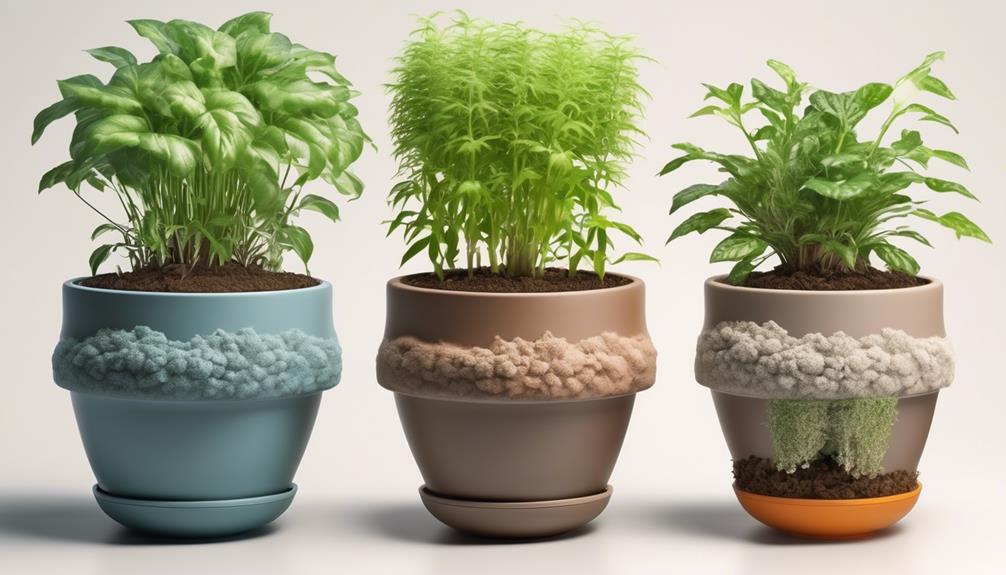
Self-watering pots provide a consistent and controlled water supply to plants, while traditional pots require regular manual watering. This key difference affects watering techniques and plant care in several ways:
- Watering Consistency: Self-watering pots use a reservoir system that allows the plant to draw water up through capillary action. This ensures a consistent moisture level for the plant, reducing the risk of over or under-watering. Traditional pots rely on manual watering, leading to fluctuations in soil moisture levels.
- Root Health: The self-watering system in these pots promotes healthier root systems by providing a more stable moisture environment. In contrast, traditional pots can experience waterlogging or dryness, which can stress plant roots.
- Water Efficiency: Self-watering pots are designed to minimize water wastage by ensuring that plants only take up the water they need. Traditional pots may lead to water runoff and wastage during manual watering.
- Maintenance: Self-watering pots generally require less frequent watering, reducing the maintenance demands compared to traditional pots, which need regular monitoring and watering.
Understanding the distinctions between these pot types is crucial for plant enthusiasts looking to optimize their plant care routines.
Self-Watering Pot Myths Debunked
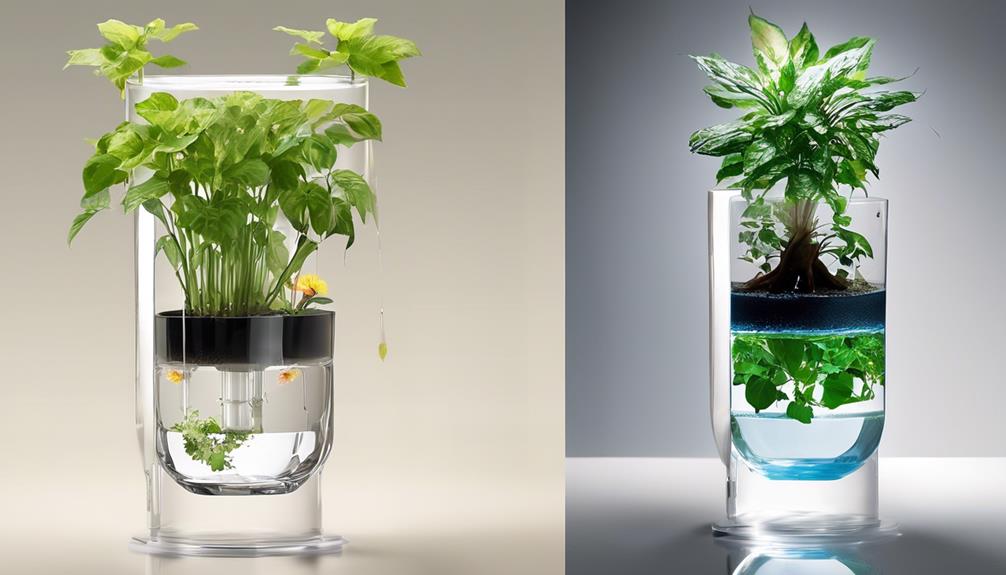
Debunking common myths surrounding self-watering pots is essential for informed plant care and optimal use of this innovative watering system.
One prevalent misconception is that self-watering pots lead to overwatering. However, these pots are designed with a reservoir that provides a buffer, allowing plants to draw water as needed.
Another common mistake is the belief that self-watering pots eliminate the need for monitoring plant hydration. While these pots offer a more consistent moisture supply, it's still vital to check the water level in the reservoir and the soil moisture to ensure the plant's specific needs are met.
Additionally, there's a misconception that self-watering pots are suitable for all types of plants. In reality, some plants may not thrive in this environment, especially those that prefer drier conditions or have specific watering requirements.
Understanding these debunked misconceptions is crucial for successful plant care and ensuring that the self-watering pot system is used effectively.
Tips for Successful Self-Watering Pot Use

After debunking common myths surrounding self-watering pots, it's important to understand the key tips for effectively using this innovative watering system to maintain healthy and thriving plants.
- Proper Watering: Ensure the water reservoir is regularly filled to maintain a consistent moisture level in the soil.
- Regular Maintenance: Clean the watering system regularly to prevent clogging and ensure proper water flow.
- Monitoring Soil Moisture: Check the soil moisture periodically to avoid overwatering or underwatering your plants.
- Placement: Position the self-watering pot in an area with adequate light and proper ventilation to promote optimal plant growth.
Successful use of self-watering pots requires attention to detail and proactive maintenance. Regularly check the water levels, keep the system clean, and monitor your plants' moisture needs to ensure they thrive.
Troubleshooting Self-Watering Pot Issues

When troubleshooting self-watering pot issues, carefully inspect the water reservoir and drainage system for any signs of blockage or malfunction.
Common issues may include clogging of the water delivery system, leading to uneven or insufficient watering of the plant.
To optimize water distribution, start by checking the water level indicator to ensure it's functioning properly. If the indicator isn't working, it could lead to overwatering or underwatering of the plant.
Next, examine the wick or wicking system to ensure it's clean and unobstructed, as a dirty or blocked wick can impede water flow to the soil.
Additionally, check for any cracks or damage to the pot, as this can affect the proper functioning of the self-watering system. If the pot is in direct sunlight, the water may evaporate faster, leading to inconsistent watering. Consider moving the pot to a more suitable location.
Frequently Asked Questions
Can Self-Watering Pots Be Used for All Types of Plants, Including Indoor and Outdoor Plants?
Yes, self-watering pots can be used for all types of plants, including indoor and outdoor plants.
The best plants for self-watering pots are those that thrive in consistently moist soil, such as ferns, peace lilies, and spider plants.
The benefits of self-watering pots for plant growth include providing a consistent water supply, preventing overwatering, and promoting healthier root systems.
These features make them ideal for maintaining optimal growing conditions for a variety of plants.
How Often Should the Water Reservoir in a Self-Watering Pot Be Refilled?
We've found that the refilling frequency for the water reservoir in a self-watering pot is dependent on various factors such as plant type, environment, and pot size.
It's crucial to monitor the water level regularly, especially during hot or dry periods.
Generally, smaller pots may require more frequent refilling than larger ones.
Keeping a close eye on the water levels ensures that your plants receive the consistent moisture they need for optimal growth.
Are Self-Watering Pots Suitable for Use in Hot or Dry Climates?
In hot or dry climates, self-watering pots offer benefits like consistent moisture for plants and reduced watering frequency. However, they may also have disadvantages such as potential for overwatering and increased risk of algae or fungal growth.
Proper maintenance and troubleshooting can help mitigate these issues, ensuring optimal plant health. Regularly checking water levels and cleaning the reservoir can help maximize the benefits of self-watering pots in such climates.
Can Self-Watering Pots Prevent Overwatering of Plants?
Absolutely, self-watering pots act as vigilant guardians, preventing overwatering by providing a reservoir for plants to draw from as needed.
This mechanism ensures that the plants receive just the right amount of water, promoting healthy growth and minimizing the risk of root rot.
The benefits of self-watering pots are clear: they offer a consistent water supply, reducing maintenance and allowing for worry-free plant care, especially in hot or dry climates.
Are Self-Watering Pots Suitable for Use in Hanging or Vertical Garden Setups?
Self-watering pots are ideal for hanging or vertical gardens due to their ability to maintain optimal soil moisture levels. These pots feature a reservoir that stores water, which is then absorbed by the soil through capillary action. This mechanism ensures that the plants receive consistent hydration, making them suitable for setups where traditional watering methods may be challenging.
The self-watering feature simplifies maintenance and promotes healthy growth in hanging or vertical garden environments.
Is a Self Watering Planter the Same as a Self Watering Pot?
Yes, the meaning of a self watering planter is the same as a self watering pot. Both are designed to provide a consistent water supply to plants, allowing them to thrive with minimal effort from the owner. These containers are a convenient option for those who may not have the time or ability to water their plants regularly.
Conclusion
In conclusion, self-watering pots are a convenient and efficient way to keep your plants hydrated.
By using a reservoir system and capillary action, these pots provide a consistent water supply to your plants, debunking the myth that they can lead to overwatering.
With proper maintenance and understanding of their components, self-watering pots can be a valuable tool for successful plant care.
So, go ahead and give them a try for a hassle-free gardening experience!

